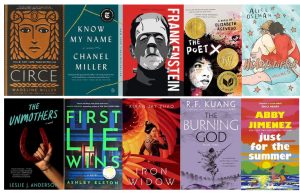This week, let’s focus on a topic that cannot seem to leave the headlines: inequality. Introduced into the popular lexicon by the Occupy Wall Street movement in 2011, inequality represents the expanding chasm between the haves and havenots. And it is a chasm. In 2010, the wealthiest 1 percent of Americans controlled a third of private wealth in our country. A strong concentration, and every indication says its passed our ideal distribution of wealth. Moreover, betting on inequality has paid off. Consider the phenomenal example raised by Chrystia Freeland in her bombastically titled book, Plutocrats: The Rise of the New Global Super-Rich and the Fall of Everyone Else : Citigroup’s Hourglass Index. The index earned its name by viewing the American economy as thinning out at the middle and expanding at the top and bottom – that is, increased purchases for the poor and the rich. Between December 10, 2009 and September 1, 2011; the Dow Jones Industrial Average rose 11 percent. Meanwhile, Citigroup’s Hourglass Index rose 56.5 percent. However you quantify it or qualify it, income inequality is, in the words or President Barack Obama, “the defining challenge of our time.” Inequality exists, inequality is dangerous, and it is time for higher education to act on it.
I am not the only who thinks so. Last week, The Chronicle of Higher Education, the leading news source for all things academy, ran March Perry’s article “Can Robert Putnam Save the American Dream?” The piece is both about Putnam – a sociologist with a knack for blending statistics and story-telling – and about inequality. It is as much about quantifying inequality as it is about qualifying it: telling the stories of dueling research and children like “Mary Sue” struggling to eke out an existence, the balance between the research occurring in Putnam’s lab and the ethnographies he commissions. I cannot recall reading a better article yet this year. As this piece is featured in the flagship higher education publication, it merits discussion in universities.
What can students do about inequality? In broad strokes, I see two paths to combating inequality: the direct – grassroots initiatives such as Rethinking Communities – and the indirect. I would like to hone in on the indirect approach: forming personal connections.
Few make the case for colleges to develop student empathy better than William Deresiewicz. His infamous article “The Disadvantages of an Elite Education”, a precursor to his infamous book, “Excellent Sheep: the Miseducation of the American Elite and the Way to a Meaningful Life,” paints a fantastic picture: Deresiewicz, a man who has spent his adult life at Ivy League institutions, standing in his kitchen with a plumber whom he cannot identify with at all. “The first disadvantage of an elite education,” writes Deresiewicz, “is that it makes you incapable of talking to people who aren’t like you.” Throughout this article and his subsequent book, Deresiewicz derides the Ivies and their ilk for disconnecting students from non-Ivy people. Deresiewicz makes a critical – and, in my opinion, unfounded – assumption: that non-Ivy League institutions don’t do the same.
As we jest, a bubble surrounds Concordia College. We get caught up in the exciting life on campus and events outside of the boundaries fall to the wayside. This isn’t the first time I’ve written that I’m not a fan of the Concordia Bubble. Neither am I the only student to feel this way. “Rather than [Becoming Responsibly Engaged in the World] just being something students poke fun at during campus events,” writes current SGA Cheif of Operations Andrea Major, “it should be a crucial part of our daily lifestyle.” The indirect approach to combating inequality will require us to do the same.
What is the advantage of a liberal arts education? The predominant explanation is ‘critical thinking,’ the most vacuous phrase in learning – who in their right mind would say they do not think critically? The advantage of the liberal arts, and our knee-jerk justification for it, ought to be empathy. By taking courses far out of our comfort zone, we learn to engage with different modes of thinking. The two most meaningful assignments I’ve had as a Cobber took me off this campus. In the first, I scuttled around town as a freshman for Scott Olsen’s Inquiry Writing course, interviewing and writing about flood mitigation efforts in our region. Second, I stumbled into Moxie Java’s daily meetup and interviewed a gaggle of sarcastic, warm retirees thanks to an assignment in Andrew Lindner’s Public Sphere course. Neither of these assignments were in my major, and neither were preparing me to be a better employee. Both made lasting impressions.
Building empathy through off-campus engagements and ethnographies is an overlooked way students can indirectly engage in social change, including inequality. When Putnam begins his discussion of the widening opportunity gap for children, he doesn’t start with statistics. Putnam begins instead with stories. As much as I and others love numbers, the stories might mean more to us. Learning to tell stories – and, more importantly, learning to listen to them – should play a central role in our collegiate education.





Be First to Comment